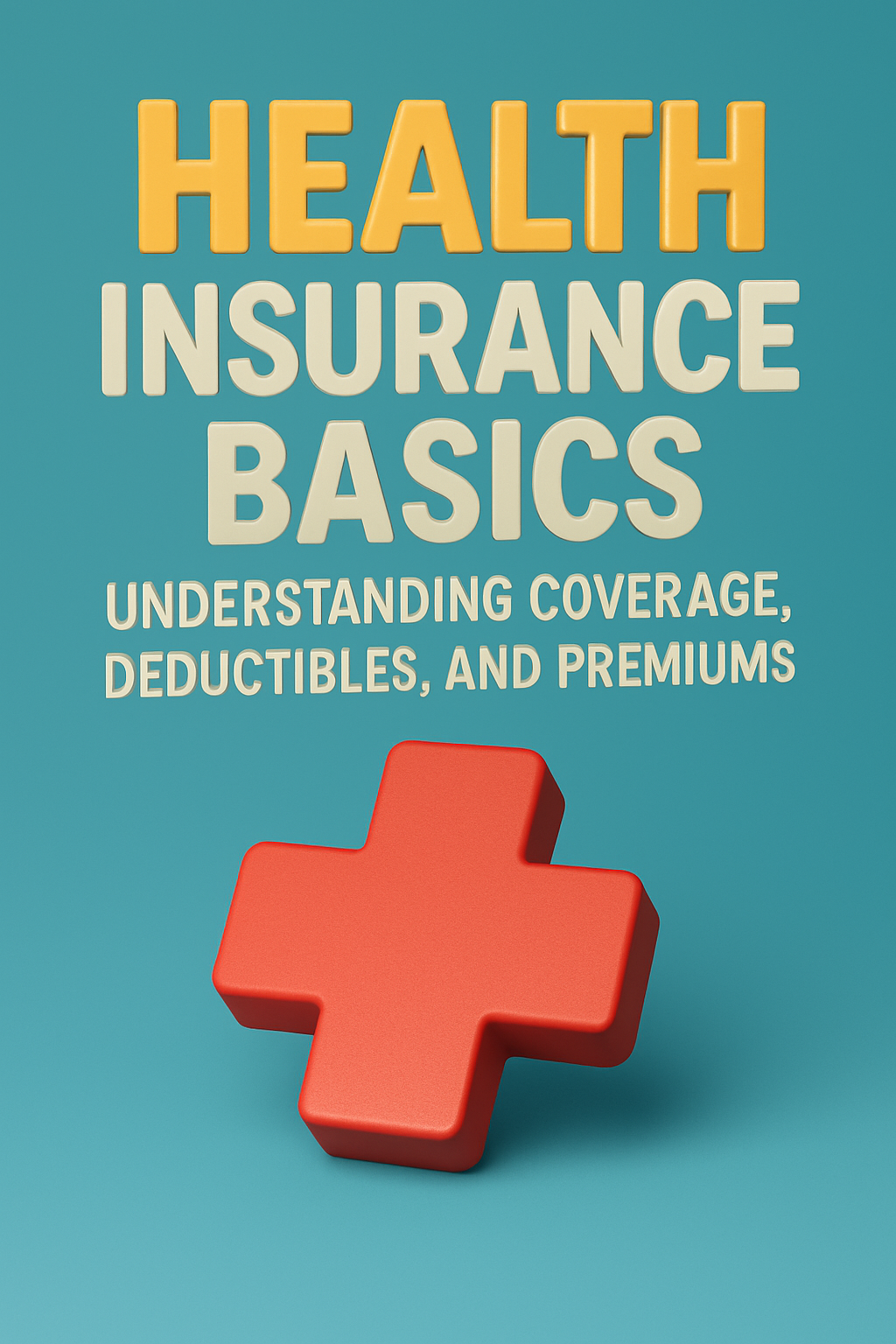Introduction to Health Insurance
Health insurance is a vital part of financial protection and access to medical care. With healthcare costs on the rise, having the right health insurance plan can shield you from unexpected medical bills and ensure you receive timely care.
Yet, many people find health insurance terms like premiums, deductibles, and copays confusing. This guide breaks down the essentials of health insurance and helps you choose the best plan for your healthcare needs.
What Is Health Insurance?
Health insurance is a contract between an individual and an insurance company that covers part of the cost of medical services. This includes:
-
Doctor visits
-
Hospitalization
-
Surgeries
-
Prescription medications
-
Preventive care
In exchange for a monthly premium, the insurance company agrees to cover certain healthcare costs, reducing your financial burden when medical issues arise.
Key Health Insurance Terms You Should Know
Understanding the basic terms can help you make better decisions:
-
Premium: The monthly amount you pay to maintain your insurance.
-
Deductible: The amount you pay out-of-pocket before insurance coverage begins.
-
Copayment (Copay): A fixed fee you pay for specific services (e.g., $25 for a doctor visit).
-
Coinsurance: The percentage of costs you share after meeting the deductible.
-
Out-of-Pocket Maximum: The most you’ll pay in a year; once reached, insurance covers 100%.
-
Network: A list of hospitals, clinics, and doctors contracted with your insurer.
How Health Insurance Works
Here’s how a standard plan functions:
-
Pay your monthly premium.
-
Receive care—you may pay full price until your deductible is met.
-
After meeting the deductible, you pay coinsurance, and your plan covers the rest.
-
Once you reach the out-of-pocket maximum, insurance covers all eligible costs.
Types of Health Insurance Plans
1. Health Maintenance Organization (HMO)
-
Requires a primary care provider (PCP)
-
Referrals needed for specialists
-
In-network coverage only (except emergencies)
2. Preferred Provider Organization (PPO)
-
Greater provider flexibility
-
No referrals required
-
Covers out-of-network care (at higher costs)
3. Exclusive Provider Organization (EPO)
-
No referrals needed
-
No coverage for out-of-network services (except emergencies)
4. Point of Service (POS)
-
Hybrid of HMO and PPO
-
Requires referrals
-
Includes out-of-network options
5. High-Deductible Health Plan (HDHP)
-
Lower monthly premiums
-
Higher deductibles
-
Often combined with a Health Savings Account (HSA)
What Does Health Insurance Cover?
Most plans include these essential health benefits:
-
Preventive care (e.g., screenings, vaccines)
-
Emergency services
-
Maternity and newborn care
-
Mental health and substance use services
-
Prescription drugs
-
Hospitalization
-
Rehabilitative and habilitative services
What Health Insurance Doesn’t Usually Cover
-
Cosmetic surgeries
-
Experimental or investigational treatments
-
Long-term care
-
Dental and vision (unless separately added)
How to Choose the Right Health Insurance Plan
1. Assess Your Medical Needs
-
Frequent doctor visits?
-
Need regular medications?
-
Require specialists?
2. Compare Plan Costs
-
Consider all costs: premiums, deductibles, copays, coinsurance, and out-of-pocket limits.
3. Check Provider Networks
-
Confirm your preferred doctors and hospitals are in-network.
4. Choose the Right Plan Type
-
HMO, PPO, HDHP, or others—based on your flexibility and referral preferences.
5. Review Coverage Details
-
Look at the Summary of Benefits and Coverage (SBC) for what’s included or excluded.
Government-Sponsored Health Insurance Options
Medicare (For individuals 65+ or with certain disabilities)
-
Part A: Hospital coverage
-
Part B: Medical coverage
-
Part D: Prescription drug coverage
Medicaid (For low-income individuals/families)
-
Eligibility varies by state
ACA Marketplace Plans
-
Offered under the Affordable Care Act
-
Include subsidies for eligible low-to-moderate income individuals
-
All plans cover essential health benefits
Money-Saving Tips for Health Insurance
-
Use in-network providers
-
Take advantage of preventive care (often free)
-
Consider higher deductibles if you’re generally healthy
-
Pair an HDHP with an HSA to save tax-free for medical expenses
-
Compare plans during open enrollment each year
Frequently Asked Questions About Health Insurance
Q: What’s the difference between a deductible and a copay?
A: A deductible is what you pay before insurance starts paying. A copay is a fixed fee for specific services after meeting the deductible.
Q: Can I get coverage with a pre-existing condition?
A: Yes. Under the ACA, pre-existing conditions are covered without penalty.
Q: When can I enroll in a health plan?
A: During open enrollment or a special enrollment period after life events (e.g., marriage, job loss).
Q: What if I miss the open enrollment period?
A: You may qualify for Medicaid, CHIP, or a special enrollment period depending on your circumstances.
Conclusion: Make Smarter Health Insurance Choices
Understanding how health insurance works empowers you to choose a plan that fits your health needs and financial goals. Don’t just shop by monthly premium—consider deductibles, out-of-pocket limits, and your access to doctors.
Take time to compare options, read the fine print, and ask questions. The right plan will protect both your health and your wallet.


